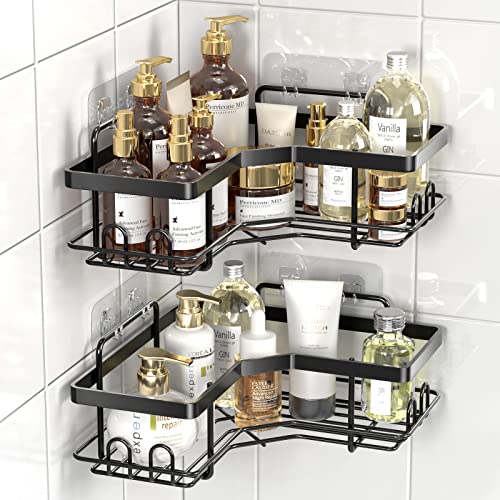What to Consider Before Buying the Best Freestanding Bathtubs 2024
The term "freestanding" refers to stand-alone tubs that do not need to be placed against a wall or in an alcove. They are available in a variety of shapes, sizes, and styles to accommodate a wide range of decor preferences. A freestanding soaking tub with shower fixtures and spa-worthy whirlpool jets is available to shoppers. Read on to learn about the features to look for when shopping for one of these lovely bathroom upgrades.
Top Picks
-
Best Overall: FerdY Bali Acrylic Freestanding Bathtub
-
Best Budget: Empava 67 Inch Acrylic Freestanding Bathtub
-
Best Aesthetic: WOODBRIDGE Acrylic Freestanding Bathtub
-
Best Exclusive: FerdY Palawan Acrylic Freestanding Bathtub
-
Best Simple Design: ANZZI Ami Drain Freestanding Soaker Tub
-
Best Modern: GETPRO Acrylic Freestanding Tub
-
Best Corner: Mokleba Acrylic Freestanding Bathtub
-
Best Function: Delta-Faucet Montour Freestanding Bathtub
Considerations when Buying the Best Shower Caddy
1. Size
When it comes to the best large soaking tubs, bigger is better—as long as the chosen model will fit in the bathroom! Customers should take precise measurements of the bathroom's square footage as well as the area they intend to dedicate to the new stand-alone tub.
When buyers begin comparing tubs, comfort should be a top priority. To ensure that they can fully enjoy the soak, shoppers should consider the length, width, and depth of the tub, as well as their body size and weight. Couples should be aware that freestanding tubs are available in sizes large enough for two people to bathe together. Some people believe that a flat-bottomed tub is less comfortable than one with a contoured bottom.
When comparing sizes, keep in mind that the larger the tub, the more water it will require to fill it. If you're looking to save water and money, a slightly smaller, shallower version of the best freestanding tubs might be a good compromise.
2. Material
Acrylic is typically the best material for freestanding tub construction because it is lightweight, inexpensive, and widely available. There are, however, stand-alone tubs made of cast iron, resin, copper, stainless steel, or stone. A cast-iron tub is extremely durable, but because they are so heavy, buyers may need to reinforce the flooring in an upstairs bathroom.
Resin tubs are heavier than acrylic but lighter than cast iron. Copper, stainless steel, and stone tubs have a distinct appearance, but customers will pay a premium for such a high-end model. Another unusual option is wood, typically oak or cedar, which provides a natural look to the bathroom while also being environmentally friendly.
3. Style
-
Single-ended tubs have one rounded, sloped end for reclining and one straight, squared-off end for drain and faucet installation.
-
Single-slipper tubs are similar to single-ended tubs, with the exception that one end is elevated rather than sloped. For users who prefer to sit up in the tub, the elevated portion provides back support.
-
Tubs with two sloped ends allow for comfortable bathing on either side. The walls are not elevated like in a slipper tub, encouraging the bather to recline.
-
Double-slipper tubs are elevated on both ends and usually large enough to accommodate two users facing each other. The drain is located in the center of these tubs, and the faucet is typically centered on one side.
-
Pedestal tubs, also known as skirted tubs, sit atop a plinth or pedestal. Pedestal tubs are the most common type of single-ended, double-ended, single-slipper, and double-slipper tub.
-
Claw-foot tubs are a traditional option that is still somewhat popular today. Instead of sitting on a pedestal base, the tub is supported by four or more feet, which are sometimes shaped like an animal's paws resting atop a ball. The disadvantage of a claw-foot tub is that the feet can damage floor tiles if the tub is very heavy.
-
Japanese soaking tubs are designed to fit into small spaces. They typically have the shortest length but compensate for it with tub height. Bathers sit rather than recline, allowing them to submerge up to their shoulders in water.
%comparison_table%
FAQs
1. What material is best for a stand-alone tub?
Acrylic is the most popular material for a freestanding bathtub because it is lightweight, easy to maintain, and reasonably priced. A cast-iron tub, on the other hand, is more durable and long-lasting.
2. How much room do I need around a freestanding tub?
Allow 6 inches around the tub as a general rule, though a tub with a rolled rim or rolled top will also require enough space to install a freestanding faucet or filler.
3. What should I look for when buying a freestanding tub?
The first factor to consider is the tub's size in relation to the bathers and the bathroom's square footage. Consider the overall weight of the tub in case the floor needs to be reinforced. Style, material, and faucet installation should all be taken into account.
Conclusion
After reading this buying guide, we hope that you can choose the best freestanding tub for your house. We highly recommend the FerdY Bali Acrylic Freestanding Bathtub and FerdY Palawan Acrylic Freestanding Bathtub. They have all the functions with best design that you might want to have for your house.








